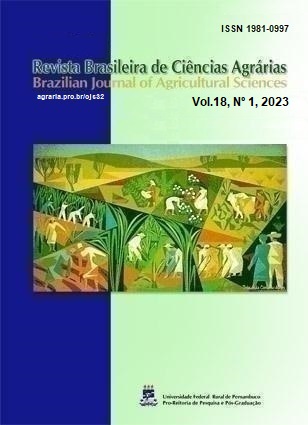Development of basil ‘Dark Opal’ from explant type and plant regulators
DOI:
https://doi.org/10.5039/agraria.v18i1a1377Keywords:
Auxin, cytokinin, in vitro culture, Lamiaceae, nodal segment, Ocimum basilicum L.Abstract
Seedling abnormalities are a common problem in micropropagation and require investigation. This study aimed to assess the growth characteristics and morphoanatomy of stem apices and nodal segments of basil (Ocimum basilicum) ‘Dark Opal’ inoculated in medium containing combinations of 6-benzylaminopurine (BAP) and naphthaleneacetic acid (NAA). Presence of calluses, adventitious roots, and abnormal seedlings was quantified at 20 and 40 days after inoculation. Growth, anatomical, and morphological parameters were evaluated after 80 days. Explant type and regulators influenced the growth and morphoanatomy of basil ‘Dark Opal’. Treatment of stem apices with 0.05 and 0.1 mg L-1 of NAA and BAP increased leaf number, fresh weight, and dry weight and decreased the incidence of calluses and abnormalities. Hyperhydric seedlings showed morphoanatomical alterations, such as disorganization and expansion of intercellular spaces with a consequent increase in parenchymal length. Thus, the results of this research allowed optimizing and understanding the important effects of growth regulators on the development of this species, which will help in in vitro mass culture programs and in biofactories for the production of secondary metabolites.



